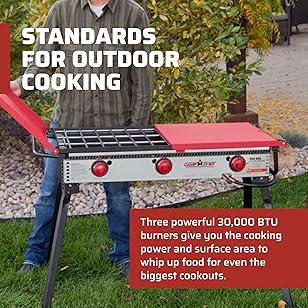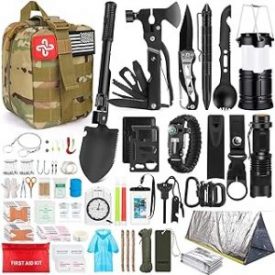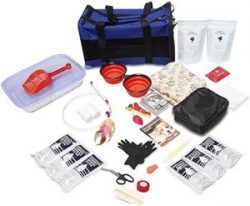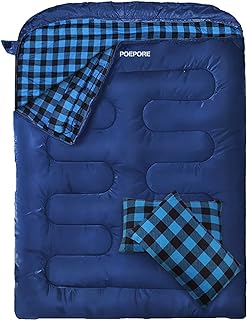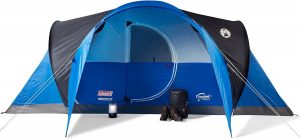Prepare For A Flood The Best Way You Can
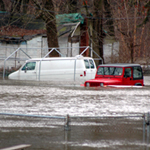 Believe it or not, floods are the natural disasters that are most common in America. According to statistics, more than a hundred people are killed by floods every year. Also, more than four billion dollars plus are the cost damages caused by floods yearly.
Believe it or not, floods are the natural disasters that are most common in America. According to statistics, more than a hundred people are killed by floods every year. Also, more than four billion dollars plus are the cost damages caused by floods yearly.
All this is according to the Red Cross of the United States.
The following are tips and advice you could do in order to prepare yourself for any flood inevitability.
Expect the expected
It is important that you clearly understand and that you are aware of any damages that a flood could cause. Some of these inevitabilities include objects swept along such as boulders that are rolling, trees that are ripped right out of the saturated ground, buildings that are destroyed as well as bridges by sliding debris.
Expect the unexpected
Things can always be worse, past results are not always an accurate predictor of future events.
Do not be afraid to ask
It is also vital that you check with your local planning and zoning office as to whether the property you are on is below the level of flooding or above it. Also, it is always good to know if the area you are in has had a history of being flooded.
Know the elevation of your property in relation to nearby water sources at their natural level and highest recorded flood level.
This knowledge helps a lot in the preparation of activities and tasks to do in case a flood does hit.
Familiarize yourself
Flood Watch means that there is the possibility of flooding.
Flood Warning means that flooding has begun or in imminent.
In your own community, it is best that you familiarize yourself in any or all of the warning signals or signs whenever a flood does occur. What radio station broadcasts emergency information, what city horns signify. Invest in an emergency battery or crank radio.
Learn, learn, learn
Know what if any are your community’s plan for evacuation. This helps you prepare yourself as well as your family and friends on what to do as well as the step by step drill.
Have an escape route(s) planned for any possible emergency such as fire, flood, toxic chemicals, etc. Know in advance the best ways to leave.
Have flood insurance
It helps if you have flood insurance (even if you do not have home owners) that is tailored particularly for when a flood occurs. Believe it or not, home owners insurance will really not reimburse any damages you may have that are caused by flood water.
Keep all vital documents
These documents include any policies for insurance, passports, birth certificates, etc. All these papers should as much as possible be kept in a box that is waterproof and one which could be accessed easily. Lacking such put them in a zip lock bag and store in the refrigerator.
Move, move, move
If in case your HVAC, furnace, electricity panel or water heater is in the basement or 1st floor of your house, you could consider having it moved up to the second floor or the attic. In that way it will be a lot less probable for these systems to be damaged by flood waters.
Plug it all
Plugging all trap sewers you have in your house using check valves actually prevents any floodwater from going into the drains of your house to raise in the tub and shower. During emergencies, using large stoppers or corks is also a good idea to plug tubs and sinks, fill them and to duct tape over electrical outlets. Turn off all mains for electrical, gas and water.
Secure
Secure heavy items that may tend to float or turn over in raising water such as refrigerators, water heaters and Liquefied Petroleum Gas Containers with stainless steel strapping to sturdy anchors.
When facing a flood
Take all warnings seriously as water levels may rise faster and higher then previously.
Aim for escaping the area instead of just moving to higher ground, it is a last resort. Store an axe in the attic to chop through the roof if trapped in the attic. Do not attempt to drive through flooded areas or go around barricades there is no way to know what may be hidden under the water from tire damaging sharp objects, to downed power lines or a sink hole may have opened, roadway collapsed. Try a different route or return to higher ground.
Wear life preservers if available. At first flood waters may be not much worse then the annoying ankle deep puddle water at the typical flooded supermarket parking lot whose developer met the minimal city drainage requirements. Later it will become more toxic contaminated with dead animals and worse. Wear strong sturdy clothing and shoes for protection. Avoid contact with flood water whenever possible, clean up as soon as possible.
Secure your home if leaving, the rescue workers will kick the door in anyway, the news will announce these are abandon homes.
Don’t be a hero unless you are one
Your city may offer a C.E.R.T. (Community Emergency Response Team course), get certified if you plan to help out. Join a group that plans to help out in emergencies especially if you keep a boat or special vehicle that may be useful. Know what the plan is if you rescue people so you don’t deliver them to another disaster.
Check and build
Checking the local building codes is a good idea as this will let you know whether it is okay to build walls and berms for floods and to be used as barriers around your own house in order to prevent any floodwater from getting into your premises.
Waterproof it all
In order to protect walls of basements, seal them using waterproof compounds so that floodwaters would be unable to get in through any cracks.
Have a battery or crank powered radio and some supplies
Having supplies such as canned goods is a must as well as first aid kits. Do not forget a can opener of course. Invest in a real 72 hour emergency food kit per person, as it can take three days or more for waters to recede to the point rescue workers can switch from rescue to supplying basic necessities.
Keep in mind only you are responsible for having reasonable and responsible supplies on hand for emergencies.
Having camping equipment can make the difference between living like cave people and a almost pleasant camp out at home. Pretty much the same emergency supplies for one disaster works for them all. Also consider what may make your stay at a community shelter more comfortable such as lawn chairs, children’s activity books, etc.
Pets
This will vary from place to place. Most shelters will not accept pets. Those that do want tea cup poodles with full vaccination records with reservations made in advance. If you have seven smelly hound dogs or forty cats licensed or otherwise, make plans as they are your responsibility.
After the flood
Return home after the authorities say the danger of more flooding is past.
Tap water must be boiled until declared safe for consumption purposes.
Food that has come in contact with flood waters should be disposed of.
Have the electric checked by a professional before turning on the main switch.
Keep an eye on friends and family who may be stressed out. Don’t forget to take proper care of yourself as people are depending on you, eat and rest.
Make a list of what needs to be done, complete what can be done within reasonable time, while knowing what to work on down the road. Take plenty of pictures, check your inventory to see what may have gone missing or stolen while you and the police were absent.
The American Red Cross with fema offers a free download booklet pdf on how to go about repairing your home after a flood. You really do want to avoid toxic black mold and wacky electrical issues.
All in all, preparation is always the best defense against floods.
_


 October 9, 2015
October 9, 2015 

